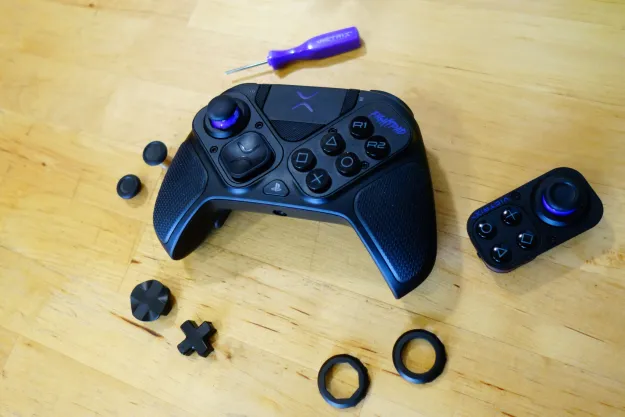Anime games are a dime a dozen, and most of them aren’t very good. Bandai Namco owns the rights to several popular animes, from Dragon Ball to Sword Art Online to One Piece, and has liberally used those rights over the years. Although there are some gems among the pile of anime-inspired video games, most don’t reach any heights above being simply OK. We’ve done the hard work for you, though, pulling the 10 best anime video games of all time. From visual novels focused on humor and horror to bombastic brawlers with a roster of iconic characters, there’s a little something for everyone.
Further reading
- The best Final Fantasy games
- The best role-playing games for Nintendo Switch
- PlayStation games we want to see on PS5
Dragon Ball FighterZ
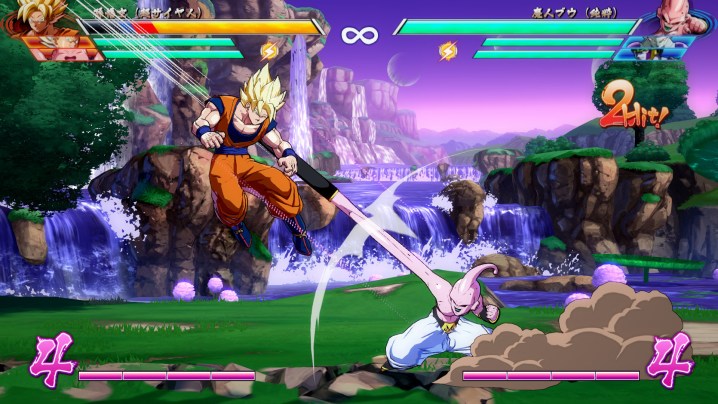
Dragon Ball FighterZ isn’t a particularly special game; it’s just a great, old-school brawler. Developed by Arc System Works, the same studio behind the BlazBlue, Double Dragon, and Guilty Gear franchises, FighterZ is all about tight gameplay, screen-filling animations, and devastating combos. Gameplay-wise, it plays a lot like Tekken 7, where you can combine two face buttons for certain attacks and modify single-button attacks with the shoulder buttons.
On top of that, though, FighterZ features multi-fighter battles where you can switch in other characters from your roster, similar to Ultimate Marvel vs. Capcom 3. Once you get good enough to play in the competitive ranks, there’s a lot of flexibility in how you build your roster of three fighters, leading to different play styles and combos. Dragon Ball FighterZ is about perfecting the basics with style, and sometimes, that’s all that matters.
Read our Dragon Ball FighterZ review
Code Vein
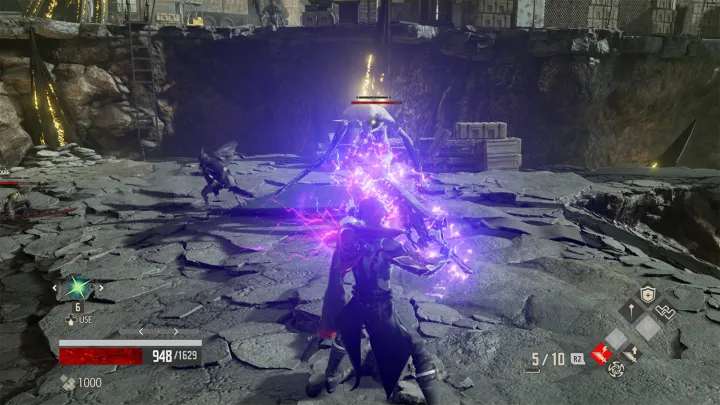
The “anime Dark Souls” tag follows Code Vein everywhere, it seems, which is just about the most reductive description possible for the game. Code Vein certainly shares elements with Dark Souls, from its limited saving options to its excruciating difficulty. For as much as it borrows, though, it evolves equally as much. Spells and abilities are hardwired into Code Vein‘s gameplay, taking the focus off of pure swordplay and moving it toward something similar to old-school, isometric ARPGs.
It’s not a hack-and-slash, but it’s not exactly a Dark Souls clone, either. Although the extremely deep character creation, straightforward co-op system, and beautiful art style are what set the game apart on the surface, it’s more than just that. Code Vein has engrossing combat with a ton of flexibility, letting you play how you want rather than forcing you down a specific path. Games like Bloodborne and Sekiro, while excellent for their own reasons, push you toward a specific play style. Code Vein gives you options while adopting a similar combat system, which makes for a game that goes beyond simply being “anime Dark Souls.”
Read our Code Vein review
Ni no Kuni: Wrath of the White Witch

Ni no Kuni: Wrath of the White Witch is basically a Studio Ghibli movie turned into a video game. With art by Studio Ghibli and a score from Joe Hisaishi — the composer behind Spirited Away and Howl’s Moving Castle, among other films — Ni no Kuni is a Ghibli movie that you can play. The art style and score alone are enough, but Ni no Kuni goes beyond that. Developed by Level-5, the same studio behind some of the best JRPGs of all time, including Dragon Quest VIII and Dark Cloud, Ni No Kuni is more than just its aesthetic.
It’s a mashup of various different JRPG systems, with influences ranging from Final Fantasy to Pokémon. Level-5 expertly handles these systems, leading to gameplay that’s rife with depth without verging into overwhelming territory. Wrath of White Witch‘s direct sequel, Revenant Kingdom, is an excellent game in its own right, but the first game’s grounded protagonist and whimsical setting are more enjoyable overall.
Read our Ni no Kuni: Wrath of the White Witch review
Persona 5 Royal

Persona 5 — along with its supercharged re-release, Persona 5 Royal — is one of the best games ever made. Atlus, the developer behind the series, has a knack for hiding simple JRPG systems and mechanics under a blanket of style and narrative, leading to a unique experience with familiar gameplay. If you’ve never played a Persona game, the setup is simple: You play as a student pulled between two worlds. During most days, you attend school, meet friends, build your social stats, and do whatever else a student does. The friends you meet and bonds you build transition over to another world, though, where you take on elaborately designed dungeons in classic JRPG fashion.
The “other world” is different for each game — it’s corrupted hearts in the case of Persona 5 — but the premise is the same between games. If Persona 5 piques your interest, the Royal version is even better. In addition to some new weapons and items, Royal adds new playable characters, an extra semester at school, two new endings, and the Thieve’s Den, a customizable hangout spot. The biggest addition is the grappling hook, though. The dungeons are mostly the same as the base game, just with a few hidden areas only accessible with the grappling hook. If you haven’t played Persona 5, Royal is the best way to experience it. Even if you have played the base game, Royal adds enough content to make a second playthrough worthwhile.
Read our Persona 5 review
Fire Emblem: Three Houses
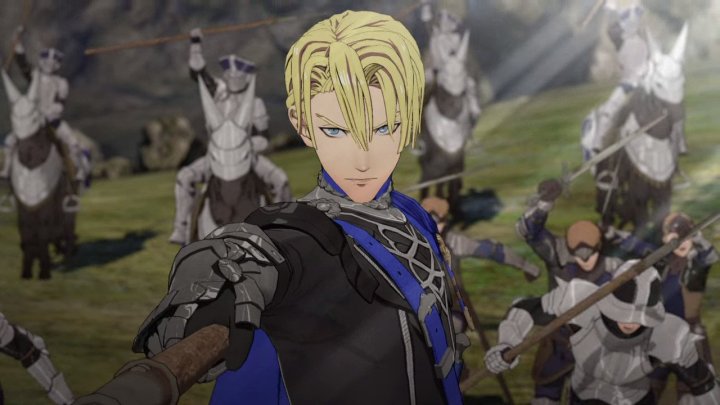
For a series that hasn’t changed all that much since it was introduced in 1990, Fire Emblem: Three Houses feels surprisingly fresh. Like Dragon Quest XI, which we’ll get to in a moment, Three Houses pushes the franchise forward in some ways while simplifying elements of the games that predated it. The lack of the series-staple weapon triangle is probably the biggest change, which translates into far more interesting and varied combat encounters with the reintroduction of weapon durability, as well as an openness when it comes to changing character classes.
Our favorite change, though, is the Persona-style social system in Three Houses. Although Fire Emblem as a series has been evolving what happens between battles, Three Houses is the first game to frame the between-battle gameplay mechanics properly. Running around Garreg Mach and talking to your students, as well as instructing them, is equally as enjoyable as commanding them on the battlefield. Fire Emblem: Three Houses is comfortable pulling from the series’s history without becoming enslaved to it, leading to a game that feels familiar but fresh. We can confidently say: You’ve never played a Fire Emblem game quite like Three Houses.
Dragon Ball Z: Kakarot

Dragon Ball Z: Kakarot delivers on a long-standing request from DBZ fans: an open-world Dragon Ball Z game. That’s what Kakarot is, following the exact same arcs featured in the anime set to the backdrop of an open world. Even if you’ve finished the anime, Kakarot is worth a play with all of its side content. From fishing to cooking to fighting optional enemies, the world of Kakarot it stuffed to the brim with things to do and secrets to uncover, even if the side content isn’t the main draw of the game.
For us, the game stands out during combat. Frantic with barely a moment to breathe, you feel like a true Saiyan when playing, as you dodge incoming attacks with ease and fire off Ki blasts at your opponent. Dragon Ball Z: Kakarot isn’t a perfect game, and certainly far from one of the best open-world games. However, even among some of the bland side content, there’s enough to latch onto to make any Dragon Ball Z fan proud.
Phoenix Wright: Ace Attorney Trilogy

Originally released for the GameBoy Advance exclusively in Japan, the first three Phoenix Wright games eventually made their way to the West in the form of Nintendo DS ports, released between 2005 and 2007. Outside of the mobile port, the only way to play these games was with a DS for over a decade, and with a certain Nintendo hybrid console making the rounds, the DS versions started quickly disappearing from the market. Now, the mobile versions are on PS4, Xbox One, PC, and Nintendo Switch, offering ample opportunity to experience this incredible trilogy.
If you haven’t heard of Ace Attorney, it’s a visual novel adventure game where you play as junior defense attorney Phoenix Wright. Each game has a series of cases split into episodes, where you’re tasked with not only uncovering the truth, but also defending that truth in court. The Phoenix Wright games are about as far away from reality as it gets — Godot, a prosecutor in the third game, wears an electric visor in court and drinks up to 17 cups of coffee per trial — but that’s why we love them. Ace Attorney and its two direct sequels make being a lawyer fun, and that’s no small feat.
Doki Doki Literature Club
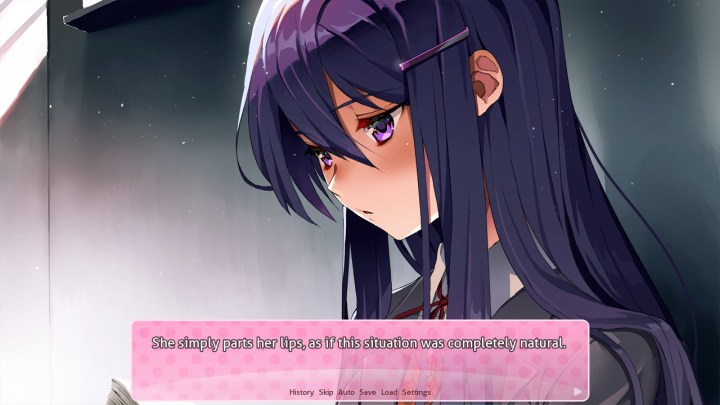
If for some reason you haven’t heard of Doki Doki Literature Club, know that it’s a horror game despite its cutesy aesthetic. We only say that because it’s free, and although there are a couple of warnings on the Steam page, it’s easy to mistake it for another visual novel if you haven’t heard of it before. With that out of the way, Doki Doki Literature Club is one of the most unique games released in recent memory. It’s a visual novel where you interact with the four members of a literature club: Sayori, Natsuki, Yuri, and the leader, Monika.
Monika is our favorite of the bunch — we’re sure you’ll grow to like her, too — but all of the characters are interesting. Doki Doki Literature Club is a game that won’t let you forget it, as it morphs from a simple visual novel into something far more sinister. If you know nothing about the game and enjoy a good scare, download Doki Doki Literature Club and start playing. It’s best played that way. Even if you know the gist of the game, letting the characters and their shenanigans work on you is far more enjoyable than watching someone else play through a YouTube video.
Dragon Quest XI

Dragon Quest XI, on the surface, has no business being as good as it is. As the 11th mainline entry in a series that basically started the JRPG genre, Dragon Quest XI doesn’t do much to evolve gameplay. The world is divided into semi-open sections, battles are turn-based with clear character classes, and the leveling system is reminiscent of Final Fantasy X, where you spend skill points earned during battle to unlock new abilities. It’s a JRPG and nothing more. Thankfully, Dragon Quest XI doesn’t need to be anything more.
It’s the characters and story that drive Dragon Quest XI forward, making the often simplistic gameplay enjoyable instead of underwhelming. The flamboyant Sylvando steals the screen whenever he’s on it, while the bickering between Veronica and Erik is filled with charm. It’s a game you’ll want to continue playing not because of unique systems or interesting combat, but because it’s impossible not to fall in love with the characters.
Catherine

Catherine is a tough sell for a lot of players. You assume the role of Vincent Brooks, a lazy, 32-year-old systems engineer caught in an unhappy relationship with his girlfriend, Katherine. One late night at the Stray Sheep, a bar Vincent frequents after work, he meets the 22-year-old Catherine, who ends up in his bed. From there, Catherine takes place in a series of cutscenes and nightmares, as Vincent faces his infidelity and the young woman he let into his bed.
The overt sexual themes are sure to turn a few players away, but Catherine has a story to tell, and a good one, at that. Developed by the same studio behind Persona 5, Catherine is a unique blend of social simulation, puzzles, and platforming, all set to the backdrop of an engrossing and thorough narrative. If you’ve been on the fence about playing Catherine because of its themes, give it a shot. At the very least, you’ll get to see some of the best English voice talent in the industry at work, with Troy Baker and Laura Bailey playing Vincent and Catherine, respectively.
Editors' Recommendations
- The best video game movies of all time
- The best jobs in Like a Dragon: Infinite Wealth
- The best ways to farm money in Like a Dragon: Infinite Wealth
- The best video game remakes of all time
- The best video game consoles for 2024




